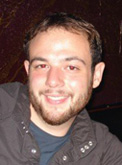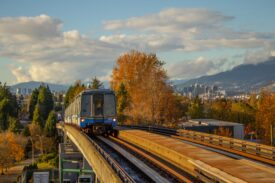Eric dP:
It was with a sort of grim satisfaction that I read the Washington Post’s excellent feature, “Wall Street’s resurgence frustrates its claims, and Obama’s.” It’s a close look at recent bank profits, bonuses, and growth and it gives lie to the complaints from the finance sector that the Obama administration is treating it punitively. It also, of course, gives lie to the idea that the Obama administration is reigning in the finance sector.
I also enjoyed Matt Taibbi going ape over Mitt Romney’s entitlement plan.
Finally—and this is completely and totally unrelated to Sightline—I’m about halfway through a new novel “Mule: A Story of Moving Weight” by an old friend of mine, Tony D’Souza. It’s a ripping yarn, as they say, and being unable to put it down almost made me late to work this morning. I am assured that the characters and events it depicts are in no way based on reality.
Alan:
This past week included the anniversary of Kristallnacht: November 9, 1938, when Hitler launched his genocide against German Jews, burning and sacking thousands of synagogues, homes, and businesses. Next came the concentration camps.
In 1939, as clouds of war gathered over Europe, many refused to recognize what was about to happen. No one could imagine a Holocaust, even after shattered glass had filled the streets on Kristallnacht. World leaders waffled and waited, hoping that Hitler was not what he seemed, that world war could be avoided. . . .
These words are from an article that made a big impression on me when I was 24 years old—a 1989 article by then-Senator Al Gore called “An Ecological Kristallnacht. Listen.” Gore continued,
In 1989, clouds of a different sort signal an environmental holocaust without precedent. Once again, world leaders waffle, hoping the danger will dissipate. Yet today the evidence is as clear as the sounds of glass shattering in Berlin. . . . Why, once again, do we fail to rally our forces? Much of the world closed its eyes as Hitler marched because the only adequate response was a horrible war many hoped to avoid. Do we now shrink from the unimaginably difficult response demanded by the global environmental crisis, and hope against hope that it will yet prove unnecessary? This crisis is so different from anything before that it is hard to believe it is real.
Much has changed in the world since 1989, when Gore memorialized the fiftieth anniversary of Kristallnacht. The world has begun to rouse itself to respond. Leaders from around the world now routinely give Gore-like speeches on the imperative of sustainability, although few yet match their words with actions. In the Northwest, many leaders, businesses, communities, and families do. They have heard the ecological Kristallnacht, and they are transforming our place–slowly, yes, too slowly, but transforming nonetheless.
…
The Tyee profiled herring this week.
Why should I care about the herring, that little silver bulldog of a fish that didn’t have the grace to die after spawning? Sure, it had high Omega-3s like salmon, but really! Herring?
That’s how the article begins, and the author was basically reading my mind. I’m a fool for Northwest nature and natural history. I love not only salmon, sage grouse, and sturgeon but even lowly lampreys and banana slugs. Well, let me tell you, by the end of reading this article, I loved herring, too. No, really. I love them. Read it!
In the category of obscure but perhaps hopeful trends, a Seattle parking garage for cars will soon become a parking garage for terrabytes.
And the November American Prospect has a thoughtful, deeply informed examination of Medicare and Medicaid, health-care financing systems I wish I understood better.
Clark:
From transportation guru Todd Litmans’ Facebook page, a cool way to visualize travel times:
TimeMaps is a new web app that shows travel times to various destinations in a region—in this case, the Netherlands. It automatically checks your location, shows the nearest train station, and charts trip times around the country in rings, with each colored ring representing another 30 minutes. The map is live: It grows and shrinks throughout the day, as travel times themselves grow and shrink. The bigger the map, the longer it’ll take you to get around. It is currently only available for train travel but future versions will include other modes.
Eric H:
Interesting reads on fast food this week. Turning conventional wisdom on its head, a new study from the UC Davis med school shows that the middle and upper classes are the driving purchasers of fast food:
The professor of health economics said the study of the dining habits of about 5,000 Americans found that as a household’s income increased, so did visits to chain fast-food restaurants such as McDonald’s.
The more likely culprit for the nation’s obesity epidemic among the poor? Super-cheap, high-calorie supermarket goods, like soda.
And one journalist reflects on the growing size of McDonald’s meals. At one time, today’s happy meal was considered ample for an adult.
Lastly, because good reads come in threes: A Conspiracy of Hogs, an economic look at the McRib.







